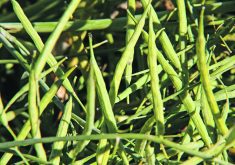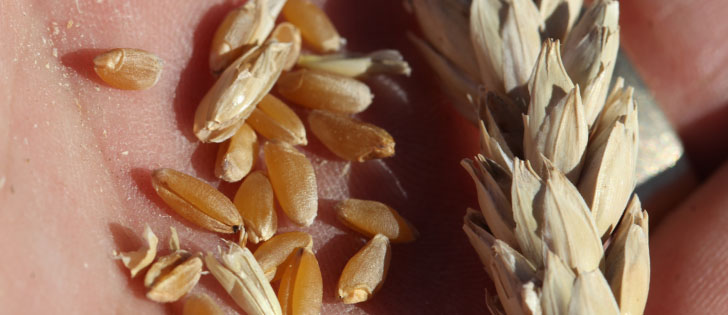Grasshoppers, worms and beetles may cause farmers headaches next year.
Agri-Trend crop adviser Michael Dolinski said grasshoppers, cutworms, wireworms, and cereal leaf beetles are among the pests farmers need to watch for in 2010.
Grasshoppers, which are usually associated with dry weather, may hatch more quickly than usual because of the unusually warm fall experienced on the Prairies.
“We think that the embryos have developed all the way to 60 percent development, which is the max,” Dolinski said.
This will probably result in a lower winter survival rate and a quick hatch if spring is hot and dry, “which is good,” he said.
Read Also

Manitoba community projects get support from HyLife
HyLife Fun Days 2025 donated $35,000 each to recreation and housing projects in Killarney, Steinach and Neepawa earlier this fall.
“You want those hoppers out and going so that you watch for them, you get them up and spray them maybe twice and they’re gone. The opposite side is if you miss them, you could have a lot of damage real fast.”
He said young grasshoppers eat dry material off the ground, so it’s better for farmers to start spraying their crops after they see damage.
Dolinski also recommended spraying a cereal crop when it’s mature to avoid residual pesticide action on a growing crop.
However, early grasshoppers may not be farmers’ only problem.
The discovery of four new species of cutworms on the Prairies last year could also spell trouble.
“This year, if you’ve got cutworms, and they’re causing damage, it’s going to be tough,” Dolinski said at Agri-Trend’s 2009 Farm Forum Event held Nov. 18-19 in Saskatoon.
He said cutworms, including the four new species, can be killed with the usual treatments, but he recommended that farmers not wait too long because the worms seem to be causing problems later than usual.
“They just seem to be going on and on and on. We lost some canola fields in mid-July to cutworms,” he said.
“I kept telling guys, ‘oh, just wait, just wait, just wait.’ Wrong move.”
However, the answer isn’t as simple with wireworms. A treatment may help prevent crop damage, but it doesn’t kill the worms.
“They go into a state of suspended animation until the next year,” Dolinski said.
“Then they come back and feed. If you treat again, you might kill them or starve them out with two years of them not feeding.”
He advised farmers to be sure they have a wireworm problem before spending money on treatment.
Farmers who see damage should dig in the ground and look for wireworms. If they don’t find any, something else is causing the problem.
Dolinski said cereal leaf beetles may also be a problem next year.
The larvae look like small slugs and strip a leaf of its green tissue as they move across it, leaving white streaks.
“If you see something like that, you see the sluggy-looking thing, even if you don’t see the sluggy-looking thing, get a hold of your local extension agent or one of our agriculturalists,” Dolinski said.
Cereal leaf beetles can be controlled by a parasite, but it isn’t present in every area.
“If we don’t have parasites, the objective will be to move in parasites early enough so that we don’t have to spray.”














